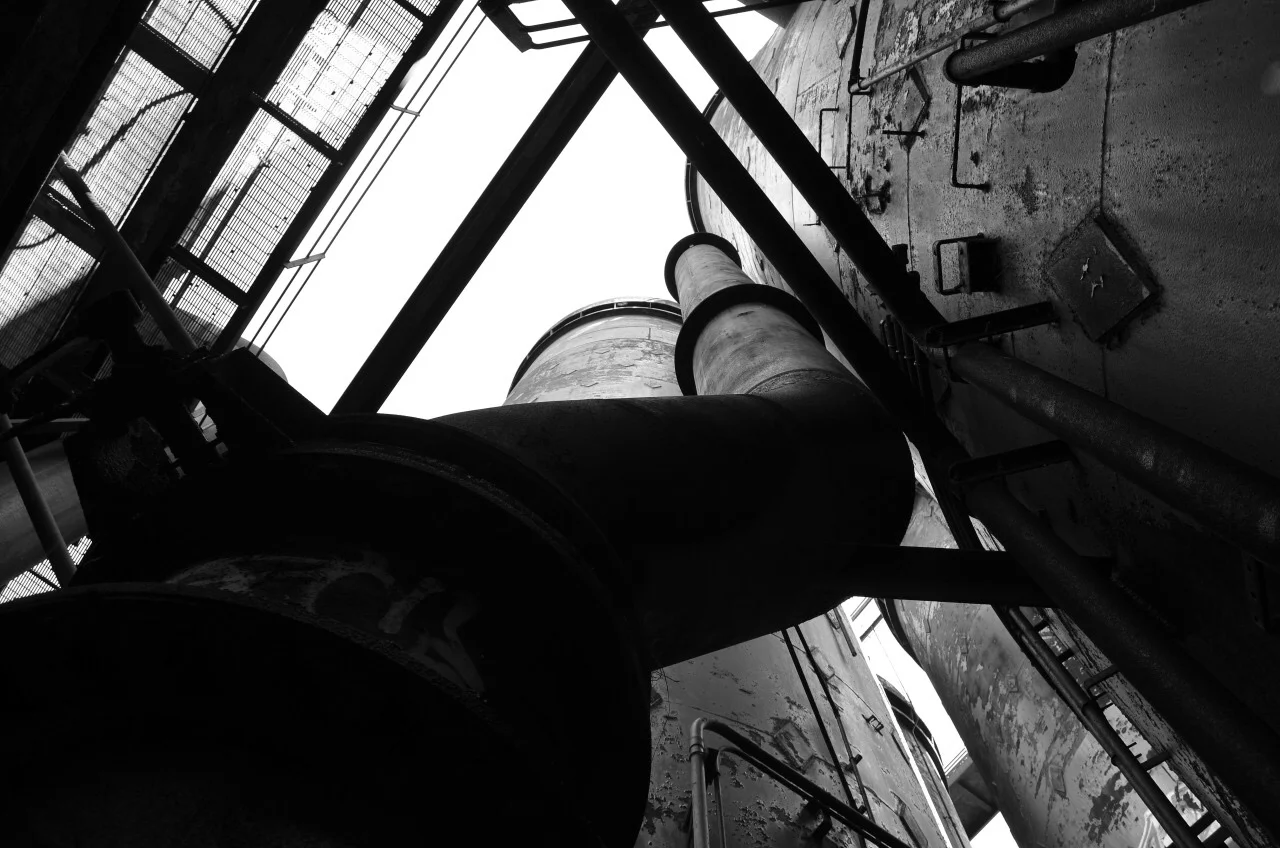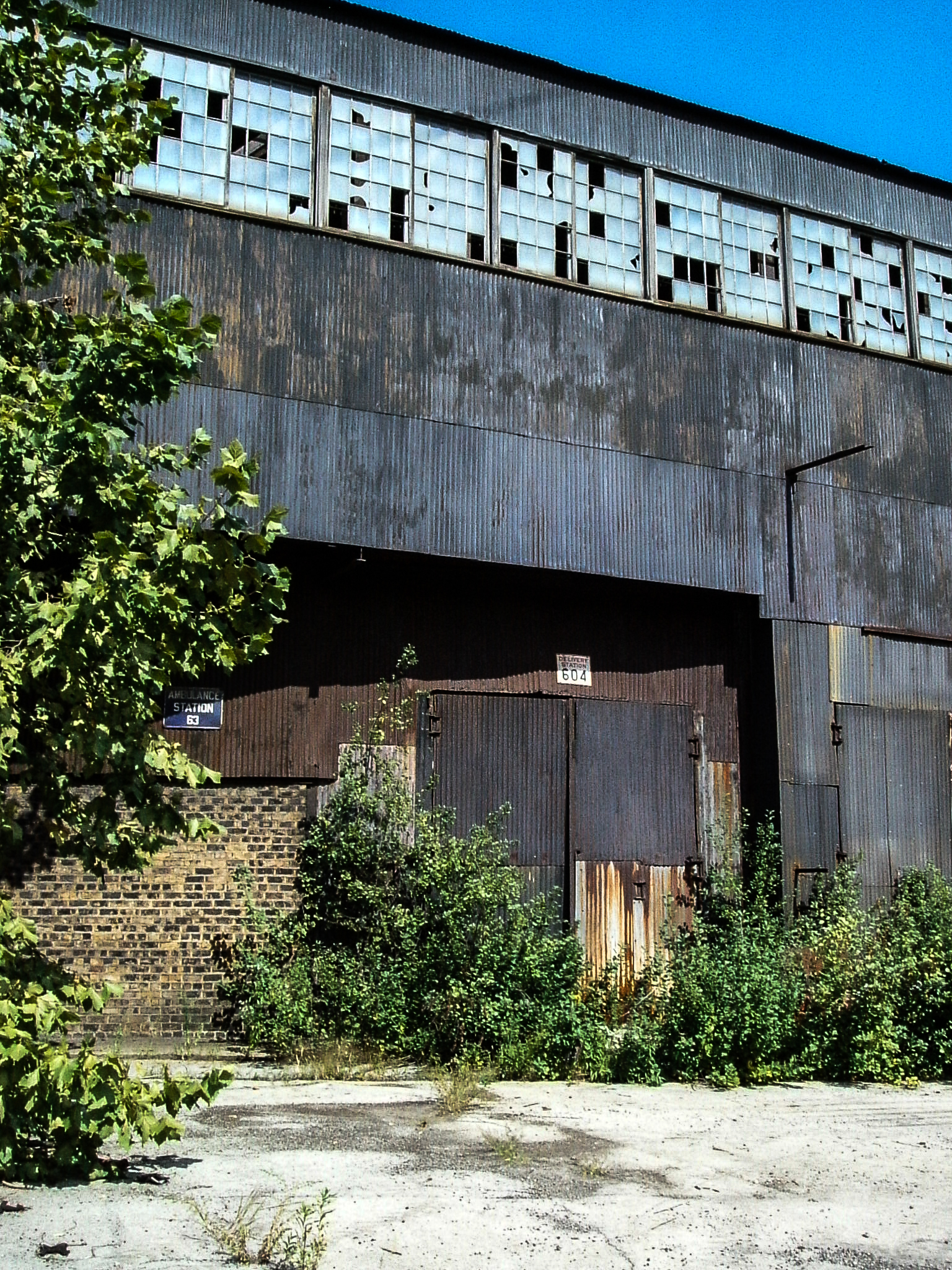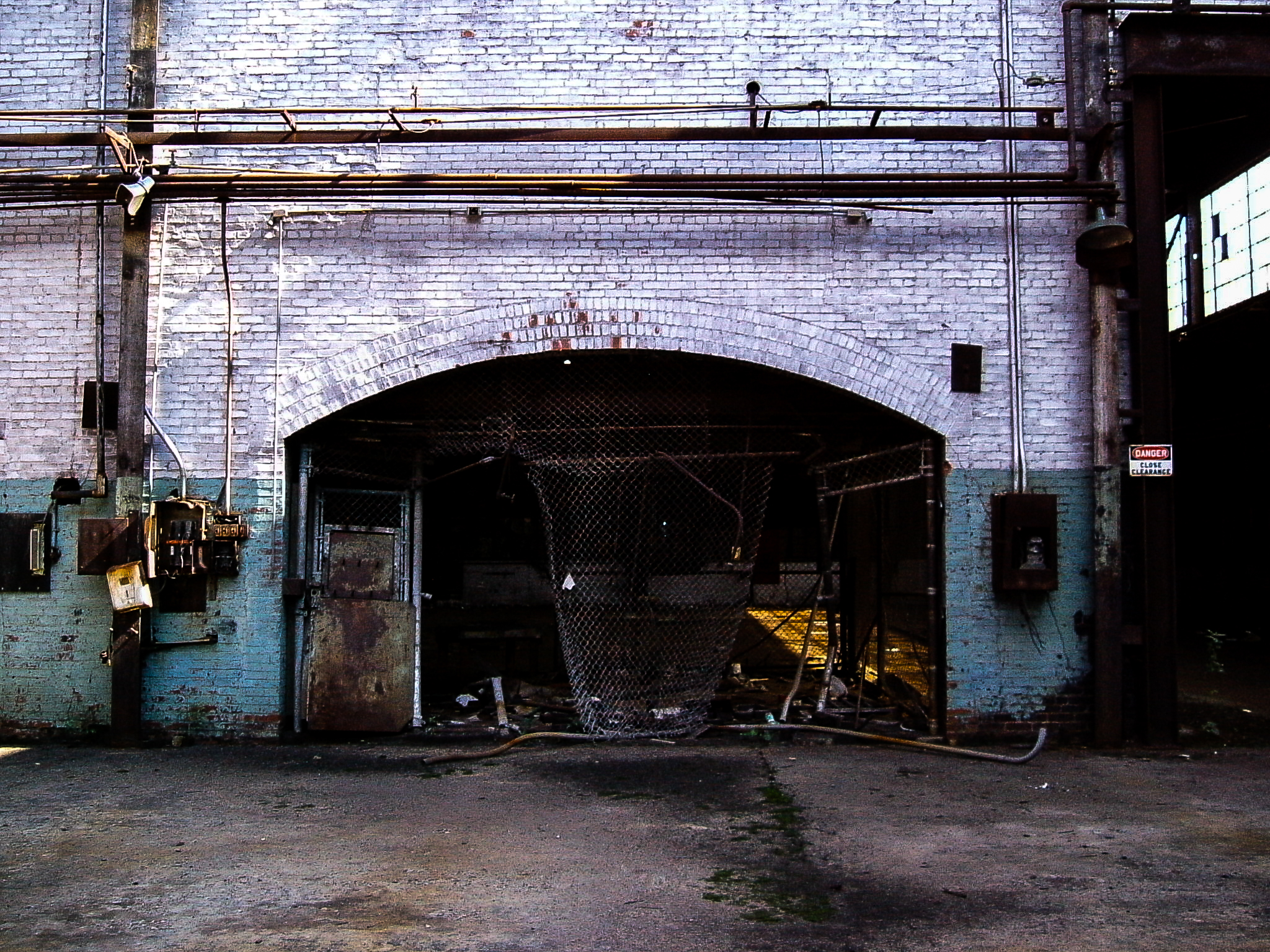GIrard, O. - A track walk and some photos of a now demolished steel mill in 2005 would lead to my extremely short lived employment in the steel industry and an interesting connection to my father.
We parked near the former Pennsylvania RR coaling tower in Girard and started hiking down the tracks. It is now falling over, but the coal tower still stands - you can see it from Route 80. Passing under 80 and heading further south we came upon the former Youngstown Sheet & Tube Co. Brier Hill works.
The building to the left was in use, occupied by Syro Steel, but there wasn't much going on in the building to the right so we went in to take a look and some photos. Good thing we did because this giant structure is now gone. It was built during WWI and housed an 84 inch and 132 inch plate mill, and later an experimental hot strip mill per Rick Rowlands. The first time I saw the Tod Engine, which he eventually restored and built a museum around, was down here but I seem to have lost those photos. It was stored here prior to moving it to Hubbard Rd.
The photos in the next set got me hired into this same mill. I had the image below as a screen saver on my work computer - it was the most "artistic" looking photo I had ever taken, even though I didn't know what I was doing.
A customer of mine saw that and I wound up showing him the whole series. He says you're a steel man? I say no but my whole family was, why? It turned out he was the owner of the company that had the contract to staff V&M Star Steel and he needed a foreman. For whatever reason he offers me the job. I ran a die line in a plastic extrusion factory for a while, but had no steel experience and was currently selling cell phones for a living. But he needed a foreman and I figured it was my birthright so we started negotiating. He agreed to pay me $18 an hour so I was ready to quit my current job. It was a pay cut but I figured I'd work my way back up.
My employment lasted a shift. I got to ride around and take a tour of the mill with the superintendent and then he took me to my job. They were going to have me cutting tube rounds as my training, which was cool with me (tube rounds meaning solid steel logs that had not been pierced to make seamless pipe).
I just sat in an elevated office, and when the rounds came down the table I would stop them and press a button that made the plasma cutter come down and cut it to length. This took me back to my childhood. I lived 5 minutes from this mill and in the summer with the windows open I would lay in bed and hear steel clanging around all night. When the rounds were cut they dropped from the table to the floor; I think this is the sound I grew up hearing.
The superintendent came back at the end of the day to have me sign the paperwork. He hands it to me and it says $11.00 an hour. I say what's this? I'm making forty some thousand a year to stand in the air conditioning and talk to pretty girls at the cell phone shop, what happened to the $18 an hour? He stuck to the $11 an hour offer, something about policy or some bullshit, I told him to stick it.
Alright, one more personal story then I'll show yins the rest of the photos. I was showing these images to my pops and he sees this overhead crane that was laying out in the yard. He says wait is that Brier Hill, I say yeah why? Turns out he hauled this crane here from what was J&L Steel Aliquippa works when they were demolishing that mill.
Ok I lied, one more personal connection. My cousin was an Ironworker on the V&M expansion project. Part of the plans for the expansion, which is right next to where this building was, was to strip the building to the beams and then re-sheet and reuse it. Once they spent the man hours stripping it down, they realized the structure was out of plumb and could not be used. Photo of the skeleton below. They eventually tore the whole thing down and the foundation is now an exterior pipe yard.
Click to enlarge the photos in the gallery below.
All images copyright Paul Grilli / The Rust Jungle 2018



















